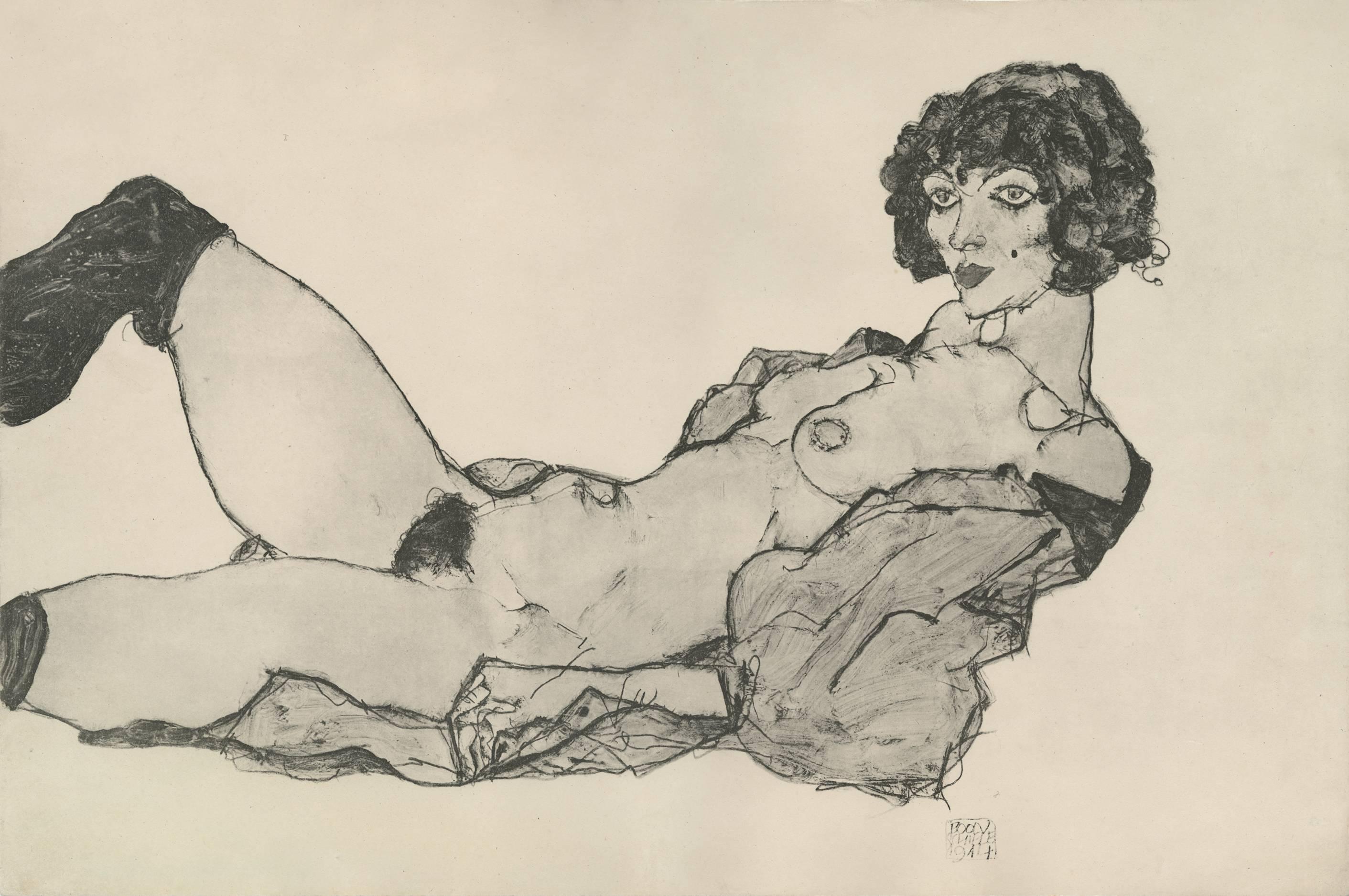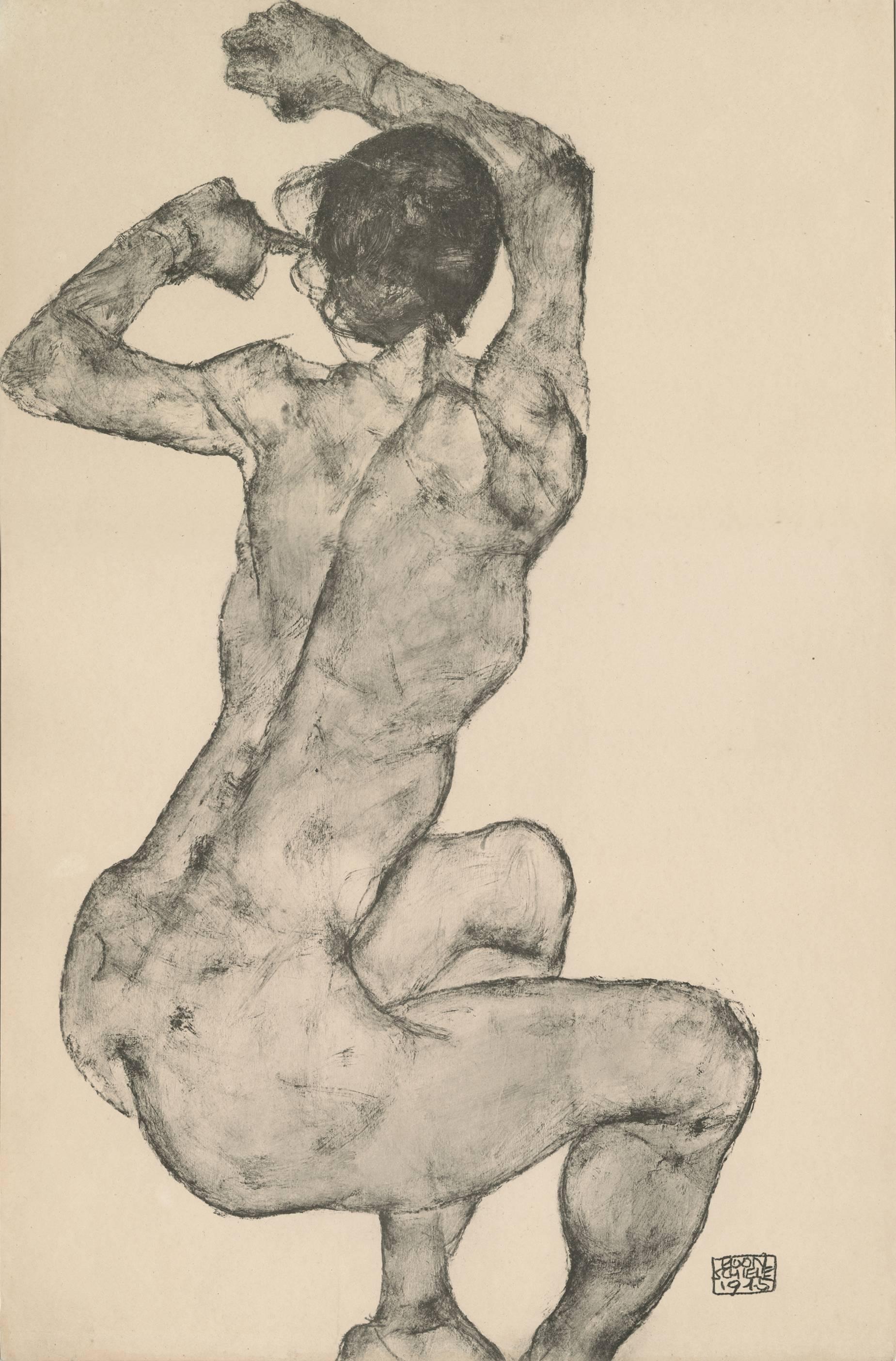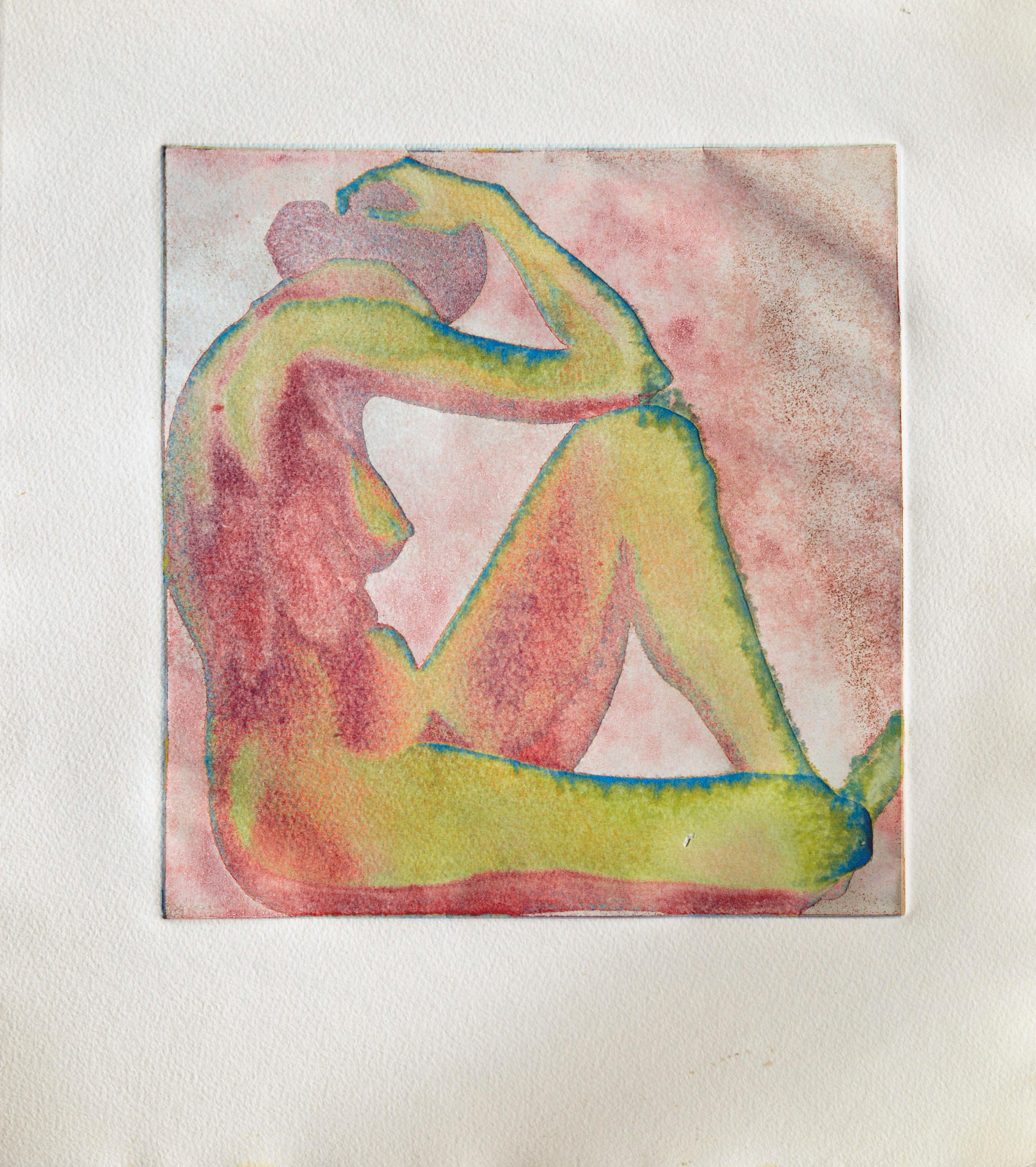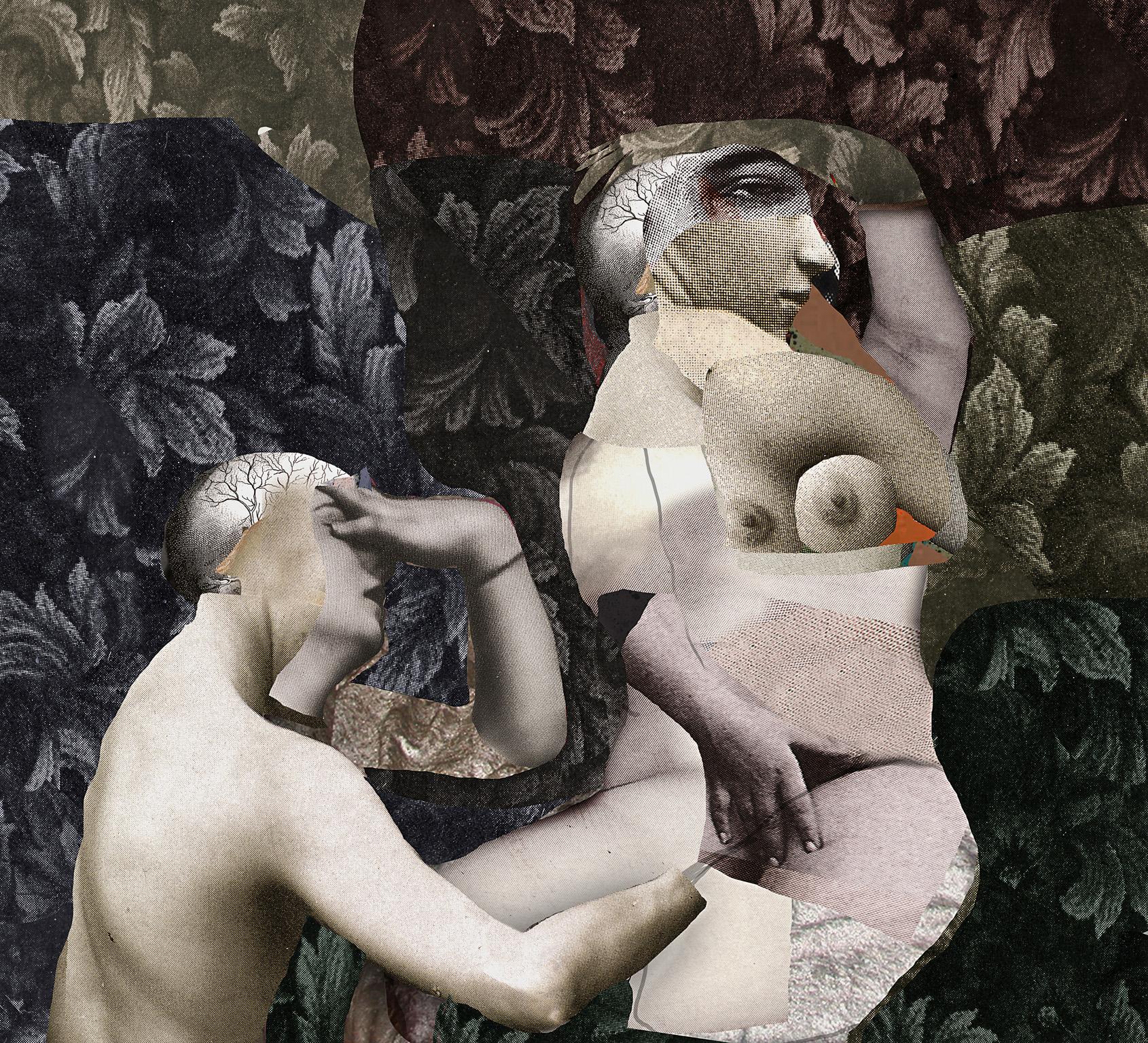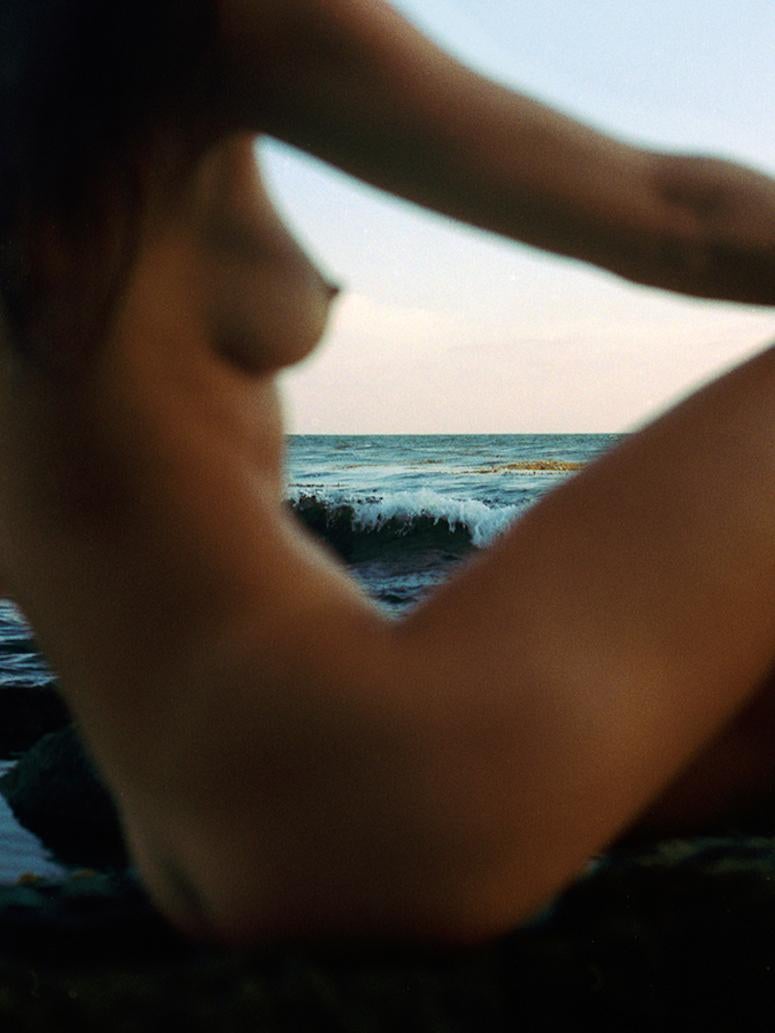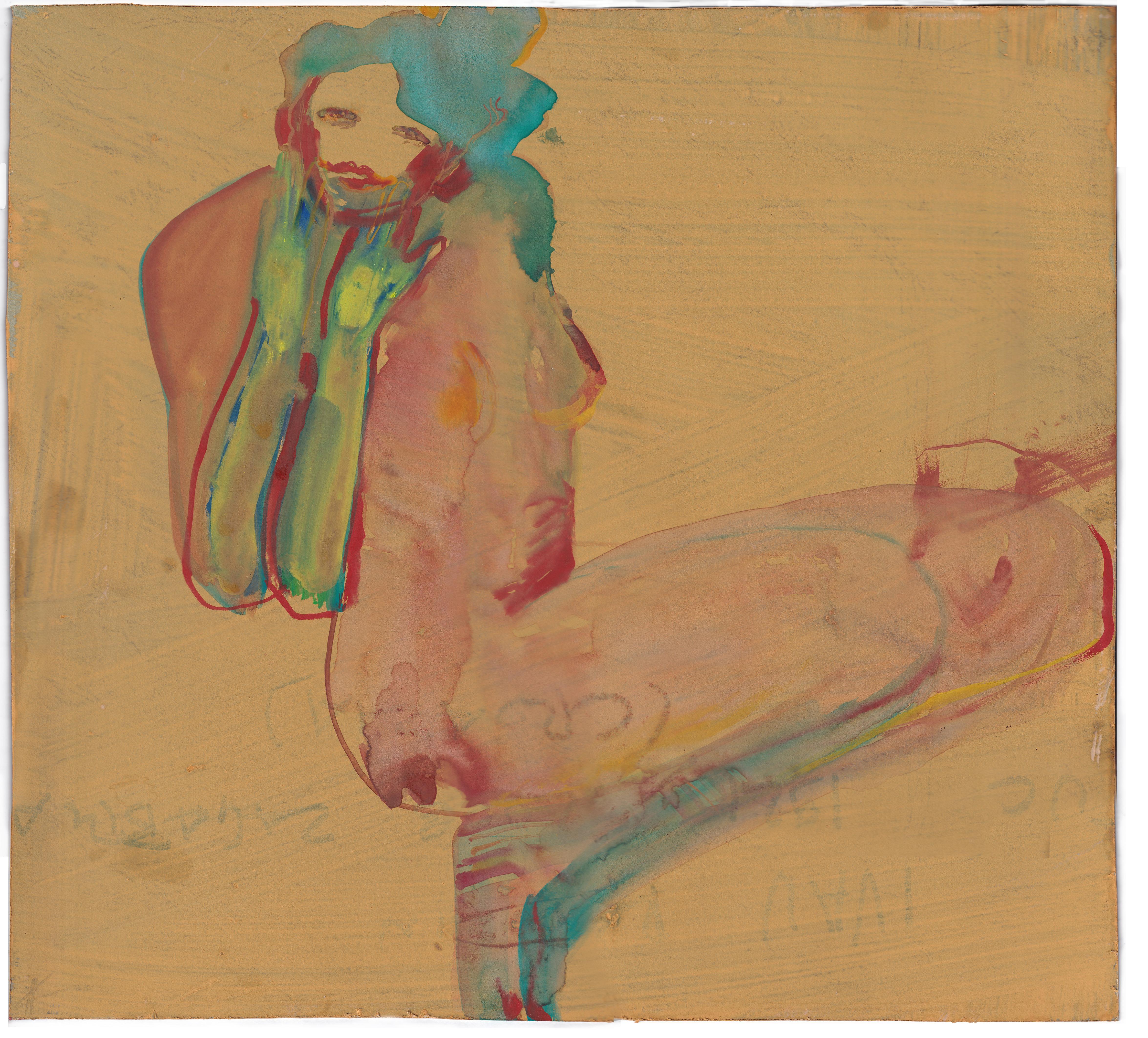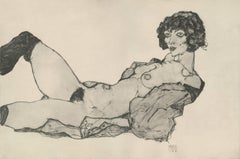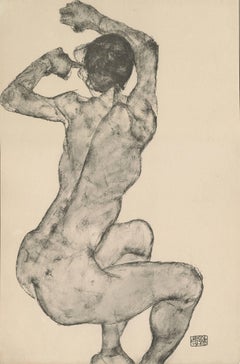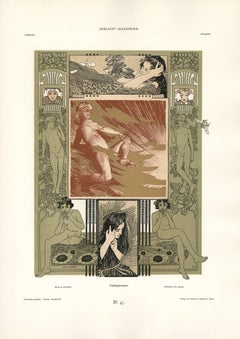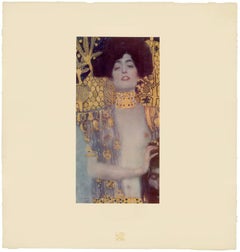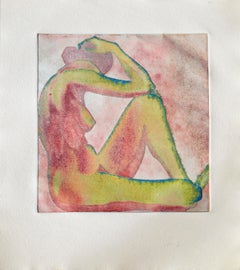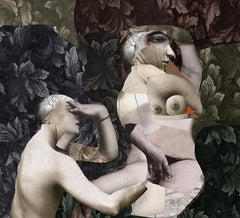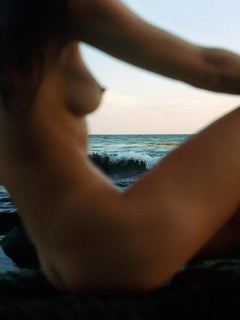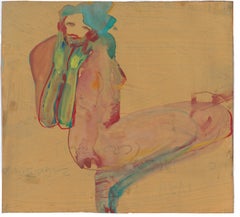Items Similar to R. Layni, Zeichnungen folio, "Two Girls, Lying Entwined" Collotype plate VIII
Want more images or videos?
Request additional images or videos from the seller
1 of 5
(after) Egon Schiele & Max JaffeR. Layni, Zeichnungen folio, "Two Girls, Lying Entwined" Collotype plate VIII1917
1917
About the Item
Egon Schiele (1890 – 1918), AUSTRIA
“ART CANNOT BE MODERN, ART IS PRIMORDIALLY ETERNAL.” -SCHIELE
Defiantly iconoclastic in life and art, Egon Schiele is esteemed for his masterful draftsmanship and precocious insight into the human condition. Part of the first wave of Austrian Modernism, he was swept away by the Viennese fascination with the tension between Life and Death (known in the works of Freud and his later interpreters as Eros and Thanatos). Life, identified with attraction, love, sexuality, and reproduction, and Death, represented by distortion, disease, repulsion, and hysteria, often appeared in the same composition, thereby suggesting the frightening life cycle of the human mind and body.
Young throughout his career, Schiele universalized his childhood traumas, thriving libido, insecurities, fears, and longings. His contorted line, jarring contrasts, and flat areas of color, demonstrate an early alliance with Expressionist philosophy and artists who were relentlessly frustrated by conventionality in all its forms. Schiele’s work embodied man’s disorientation and confusion in a seemingly absurd world, a world plagued by disease and war. It continues to be astonishingly relevant today, not just because it helped define Modernism but also because it revealed the dark and immutable aspects of the human condition.
Zeichnungen is a fine art print portfolio published by Verlag der Buchhandlung Richard Lanyi, Vienna, 1917, printed by Max Jaffe in an edition of 400 under the supervision of Egon Schiele. The plates and negatives of the 12 printed images of original watercolors and drawings by Schiele were destroyed after the run. Included with the 12 unbound sheets of mono-chromatic printed images was a Title Page and essay about Schiele’s work printed verso and a Justification Page listing the 12 untitled works’ owners and dates created. At the bottom of the Justification page, Schiele hand-signed, dated and numbered each copy. The collection came in a string-tied box whose cover displayed a printed self-portrait by Schiele.
Often cast as an enfant terrible, who was imprisoned in 1912 for publicly displaying lewd erotic-based paintings and drawings, Egon Schiele (1890-1918) was in actuality a central figure of the avant-garde at the time this portfolio was printed. Schiele’s Zeichnungen portfolio provides a rare example of the existing link between Schiele, the iconic artist, and his Viennese cultural milieu. As expressed in the portfolio’s text, Schiele's hand joined so many ways of seeing to capture the erotic, the intellectual, the esthetic. In the early years of 20th century Vienna, there was no clear separation between fine art, science, sociology and politics or philosophy; the cross-pollinating character of Viennese intellectual life was robust. Rather than cut off and confined to the university, intellectual activity thrived in social spheres such as coffee houses and salons. Huge overlap existed among these interdisciplinary circles. In a city number-ing approximately 2 million, only a few hundred comprised the cultural and political elite. Schiele exhibited widely, helped to organize exhibitions and had earned such a following that upon the death of Gustav Klimt in February the year following Zeichnungen’s publication, Schiele had naturally taken up the torch as Klimt’s successor. As leader of the 49th Vienna Secession Exhibition in 1918, the responsibility to create an exhibition poster and art for the main gallery fell on Schiele’s shoulders. Critical accolades for his Expressionist work made certain Schiele’s leading position in the world of art. At the height of this success, however; Schiele’s life was cut short by Spanish Influenza. He died at the age of 28. Shiele’s Zeichnungen portfolio is all the more valuable as an art piece which was realized during his protracted lifetime as well as for the key insights it provides into the intellectual circles which characterized early 20th century Vienna. Schiele’s portfolio was a picture of Vienna, itself: a collaboration between fine artist; art collectors; art promotors; idea disseminators; scientists; and printers.
Buchhandlung Richard Lanyi, whose publishing branch of the business published Schiele’s Zeichnungen portfolio, was indeed one of these significant cultural spheres and places to gather. On its first floor was the bookstore and lecture room. Notable Sociologist, Karl Kraus, was a regular there. On the second floor, Lanyi housed a veritable overflow of prints, portfolios and original art works by Klimt, Kokoschka, and others including Schiele. Artists and intellectuals from many disciplines quite literally rubbed shoulders in this intimate space with the likes of wealthy industrialists. Art held a unique place within this social setting. Certainly, it was collected as a symbol of status and displayed in homes by the wealthy elite. Art also served a dual purpose; within these intellectual social spheres, art was a form of scholarship. Art was conversation and fodder for the promulgation of ideas within multi-disciplinary areas of intellectual and cultural interest. It was intended to be shared. A portfolio of images re-producing works of art which were not widely accessible, by nature of their permanent locations and the cumbersomeness to move them, was therefore an especially important contribution to the dynamic inner workings of Viennese high culture. Schiele’s Zeichnungen quickly sold out. It is a testament to the level of interest for Schiele’s work among these closely-knit circles of collectors as well as a fine example of the vigorous intellectual culture which existed generally in Vienna at the time.
The collotype print form was at this time the preferred method of reproducing fine works of art. The printer of Schiele’s Zeichnungen portfolio was Max Jaffe, a Viennese specialist in fine art collotypes. This dichromate-based photographic process had been invented in 1856. The gelatin plates required delicate preparation involving light exposure, washing, and curing. They were inked with a velvet or leather roller and printed using a hand proof process with a light-pressured press. Collotype plates could not be re-used; the limited edition prints made from colloid inks were stable and posed no danger of fading like other photographic processes of the time. In fact, the fine reticulations created on the plates using the collotype process produced prints of extremely high quality.
- Creator:(after) Egon Schiele & Max Jaffe (1890 - 1918)
- Creation Year:1917
- Dimensions:Height: 12.75 in (32.39 cm)Width: 19.5 in (49.53 cm)
- Medium:
- Movement & Style:
- Period:
- Condition:Literature: "Egon Schiele: The Complete Works" by Jane Kallir. 1990. Pg. 551 (#1743).
- Gallery Location:Chicago, IL
- Reference Number:1stDibs: LU46736447492
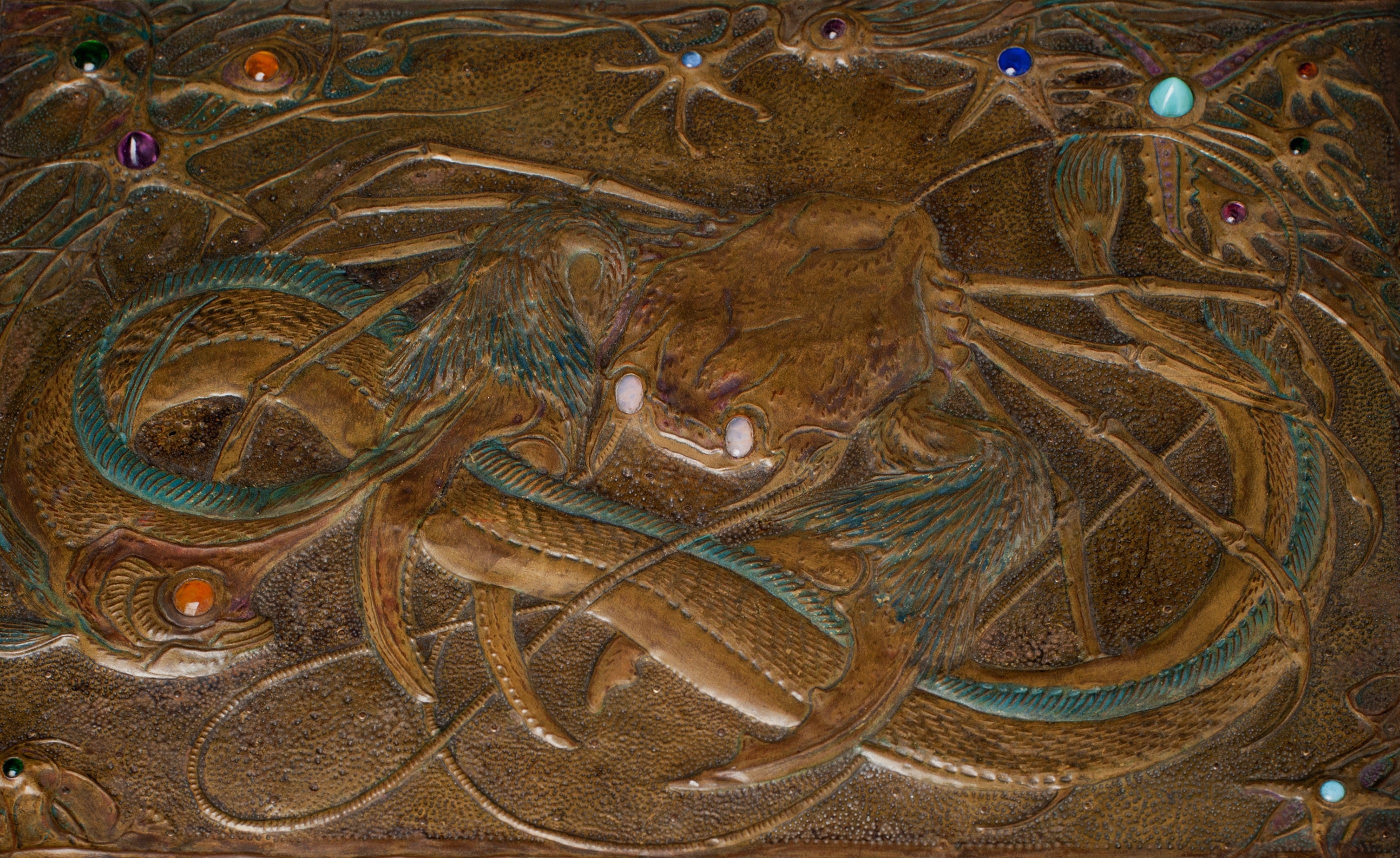
About the Seller
5.0
Platinum Seller
Premium sellers with a 4.7+ rating and 24-hour response times
Established in 2013
1stDibs seller since 2016
93 sales on 1stDibs
Typical response time: 1 hour
- ShippingRetrieving quote...Shipping from: Chicago, IL
- Return Policy
Authenticity Guarantee
In the unlikely event there’s an issue with an item’s authenticity, contact us within 1 year for a full refund. DetailsMoney-Back Guarantee
If your item is not as described, is damaged in transit, or does not arrive, contact us within 7 days for a full refund. Details24-Hour Cancellation
You have a 24-hour grace period in which to reconsider your purchase, with no questions asked.Vetted Professional Sellers
Our world-class sellers must adhere to strict standards for service and quality, maintaining the integrity of our listings.Price-Match Guarantee
If you find that a seller listed the same item for a lower price elsewhere, we’ll match it.Trusted Global Delivery
Our best-in-class carrier network provides specialized shipping options worldwide, including custom delivery.More From This Seller
View AllR. Layni, Zeichnungen folio, "Reclining Nude w/Green Stockings" Collotype PL XI
Located in Chicago, IL
Egon Schiele (1890 – 1918), AUSTRIA
“ART CANNOT BE MODERN, ART IS PRIMORDIALLY ETERNAL.” -SCHIELE
Defiantly iconoclastic in life and art, Egon Schiele is esteemed for his masterful...
Category
1910s Vienna Secession Nude Prints
Materials
Paper
R. Layni, Zeichnungen folio, "Nude With Raised Arm" Collotype plate IX
Located in Chicago, IL
Egon Schiele (1890 – 1918), AUSTRIA
“ART CANNOT BE MODERN, ART IS PRIMORDIALLY ETERNAL.” -SCHIELE
Defiantly iconoclastic in life and art, Egon Schiele is esteemed for his masterful...
Category
1910s Vienna Secession Nude Prints
Materials
Paper
Gerlach's Allegorien Plate #47: "Morning in the Spring" Lithograph
By Koloman Moser
Located in Chicago, IL
Koloman Moser
(1868 –1918), AUSTRIAN
Instead of applying his flair and art education solely to painting, Koloman Moser embodied the idea of Gesamt Kunstwerk (all-embracing art work) by designing architecture, furniture, jewelry, graphics, and tapestries meant to coordinate every detail of an environment. His work transcended the imitative decorative arts of earlier eras and helped to define Modernism for generations to come. Moser achieved a remarkable balance between intellectual structure (often geometric) and hedonistic luxury.
Collaborating with Gustav Klimt and Josef Hoffmann, the artist was an editor and active contributor to Ver Sacrum, (Sacred Spring), the journal of the Viennese Secession that was so prized for its aesthetics and high quality production that it was considered a work of art. The magazine featured drawings and designs in the Jugendstil style (Youth) along with literary contributions from distinguished writers from across Europe. It quickly disseminated both the spirit and the style of the Secession.
In 1903 Moser and Hoffmann founded and led the Wiener Werkstatte (Viennese Workshop) a collective of artisans that produced elegant decorative arts items, not as industrial prototypes but for the purpose of sale to the public. The plan, as idealistic then as now, was to elevate the lives of consumers by means of beautiful and useful interior surroundings.
Moser’s influence has endured throughout the century. His design sensibility is evident from the mid-century modern furniture of the 1950s and ‘60s to the psychedelic rock posters...
Category
1890s Vienna Secession Figurative Prints
Materials
Paper
H.O. Miethke Das Werk folio "Judith I" collotype print
By Gustav Klimt & K.K. Hof-und Staatsdruckerei
Located in Chicago, IL
Judith I, no. 9 from the second installment of Das Werk Gustav Klimts
Much like his treatment of the Classical personage, Danae, from Greek mythology, Klimt’s depiction of Judith takes an Old Testament character, a heroine who avenges the death of her husband by killing an Assyrian king, and firmly positions her in his present-day Vienna. His multicolored collotype rips the canvas from its gilded frame which directly references the subject with its title: “Judith und Holofernes”. Now in print form, Judith, holding the severed head of a male in murky shadow, is the ultimate Viennese femme fatale. Her likeness is unmistakably similar to a former lover of Klimt’s and famous Viennese soprano, Anna von Mildenburg. Though his allusion to ancient Assyria is apt, Klimt literally lifted the gold patterned background’s design motif from a relief detail from Sennacherib’s Palace displayed in a London museum. His context then is contemporary. In a sensual and sexually powerful tour de force, Klimt’s Judith...
Category
Early 1900s Vienna Secession Figurative Prints
Materials
Paper, Ink
H.O. Miethke Das Werk folio "Water Snakes II" collotype print
By Gustav Klimt & K.K. Hof-und Staatsdruckerei
Located in Chicago, IL
Water Snakes II, no. 9 from the fourth installment of Das Werk Gustav Klimts
The last painting Klimt exhibited with the Secession before resigning, Water ...
Category
Early 1900s Vienna Secession Figurative Prints
Materials
Paper
H.O. Miethke Das Werk folio "Sunflower" collotype print
By Gustav Klimt & K.K. Hof-und Staatsdruckerei
Located in Chicago, IL
Sunflower, no. 10 from the third installment of Das Werk Gustav Klimts
Created during his residency in Litzlberg on Attersee, where Klimt and the Floge family summered from 1900-1907, Klimt explores nature’s transcendental qualities. His single sunflower is human-like, it’s golden halo is like a ring of sun-kissed hair surrounding a bald pate. It’s known that at the same time Klimt was creating this image, he was also at work on a photo essay about the Floge sisters’ clothing from their fashion salon. Their fashion house was best known for its “reform dresses” which featured loose-fitting long robes which billowed at the arms and torso. Viewed with this in mind, it is not a hard leap to imagine the lone sunflower as a self-portrait from reverse. Klimt’s balding head crowned in a golden corona forms the apex of a pyramidal flowing gown of foliage and flowers. By orienting the anthropomorphic flower at the garden’s central foreground and adorning it with repetitive motifs of round flowers of varying sizes, Klimt’s sunflower...
Category
Early 1900s Vienna Secession Landscape Prints
Materials
Paper
You May Also Like
Nude Figure in Red
By Patricia A. Pearce
Located in Soquel, CA
Nude in Red, a collotype figure study by Patricia A. Pearce (American, b. 1948). Unframed. Signed "PP" on verso. Image: 8.5"H x 7.75"W.
Patricia Pearce was a California artist and a...
Category
1980s Expressionist Nude Prints
Materials
Paper, Ink, Color
Kamasutra I - erotic art, collage, floral tapestry, nude, sensuality in art
Located in New York, NY
Giuseppe Ragazzini's Kamasutra I captivates with its bold exploration of intimacy and sensuality, presented through a fragmented digital collage. The composition features intertwined...
Category
Early 2000s Expressionist Nude Prints
Materials
Archival Paper, Archival Pigment
"Brooke (Blue Waves)" Photography 30" x 22" inch Edition 2/7 by Larsen Sotelo
By Larsen Sotelo
Located in Culver City, CA
"Brooke (Blue Waves)" Photography 30" x 22" inch Edition 2/7 by Larsen Sotelo
NOT FRAMED - ships in a tube
Giclee (Archival Ink) print on 310G Platine Fibre Cotton Rag w/satin fin...
Category
21st Century and Contemporary Expressionist Nude Photography
Materials
Archival Ink, Rag Paper, Giclée
print poster girl
Located in Roma, GB
luxary limited edition collectable piece
print on paper
artist: Anastasia Aureum
title: "Mimmi"
limited edition.
hand signed
Anastasia Aureumis an internationally renowned vi...
Category
2010s Expressionist Figurative Prints
Materials
Paper, C Print, Color, Digital
$449 Sale Price
60% Off
Der Mord II (Liebespaar II)
By Otto Mueller
Located in New York, NY
A superb, richly-inked impression of this very scarce, important German Expressionist lithograph on smooth, cream wove paper. Edition of approximately only 20. Signed in pencil. Publ...
Category
1910s Expressionist Abstract Prints
Materials
Lithograph
Apeles Fenosa Spanish Sculptor Mourlot Lithograph Abstract Expressionist Figures
By Apelles Fenosa
Located in Surfside, FL
This is from a hand signed, limited edition (edition of 125) folio or full page lithographs some having a poem verso. The individual sheets are not signed or numbered. This listing is just for the one sheet, not for the cover sheet or the signed sheet.
This was printed at Mourlot in Paris, France, on velin D'Arches paper.
Apel les Fenosa i Florensa (1899 - 1989) lived in Spain. Apelles Fenosa is known for Expressionist Sculpture.
Artist's alternative names: Apel·les Fenosa, Apelles Fenosa
Spanish...
Category
1970s Expressionist Figurative Prints
Materials
Lithograph
